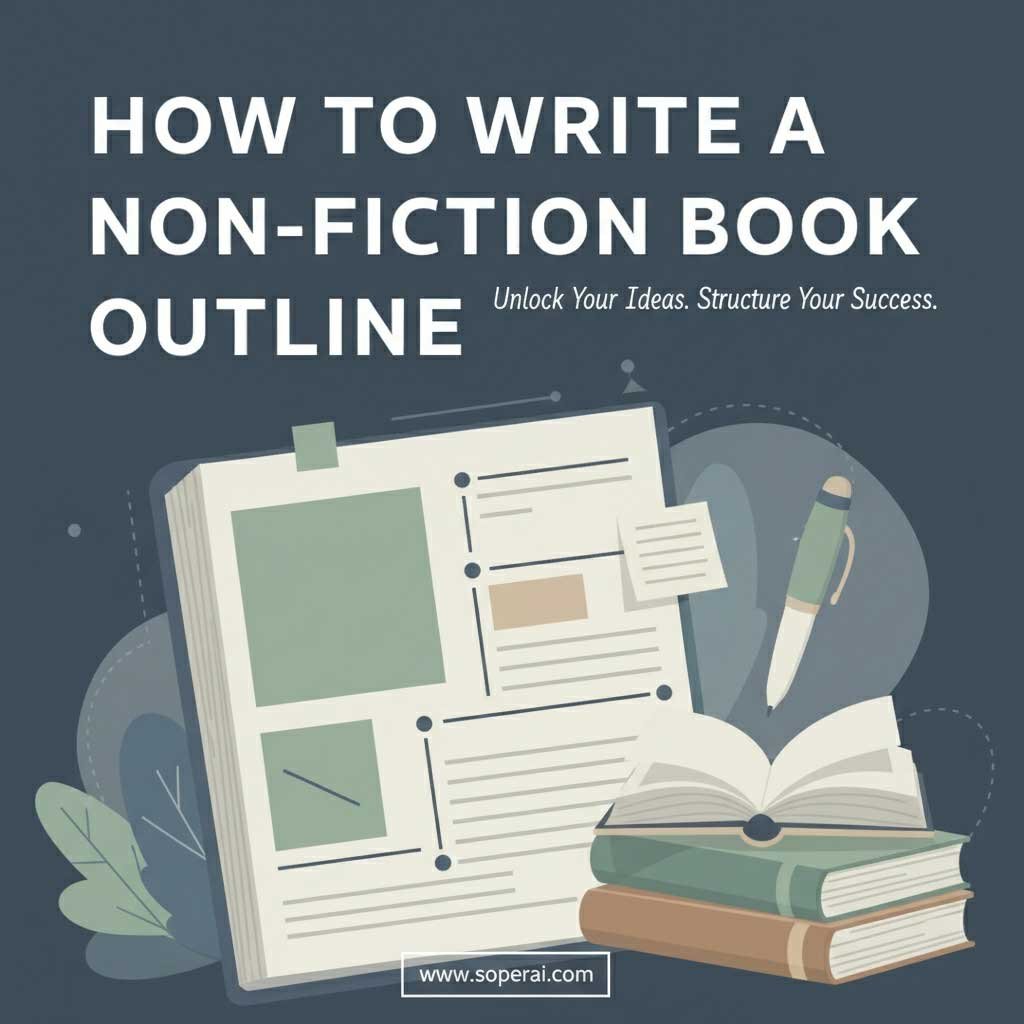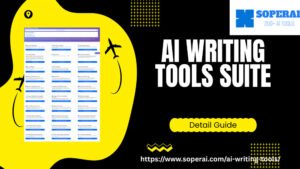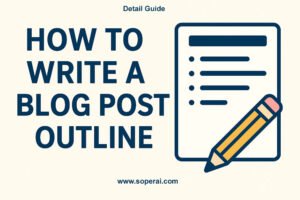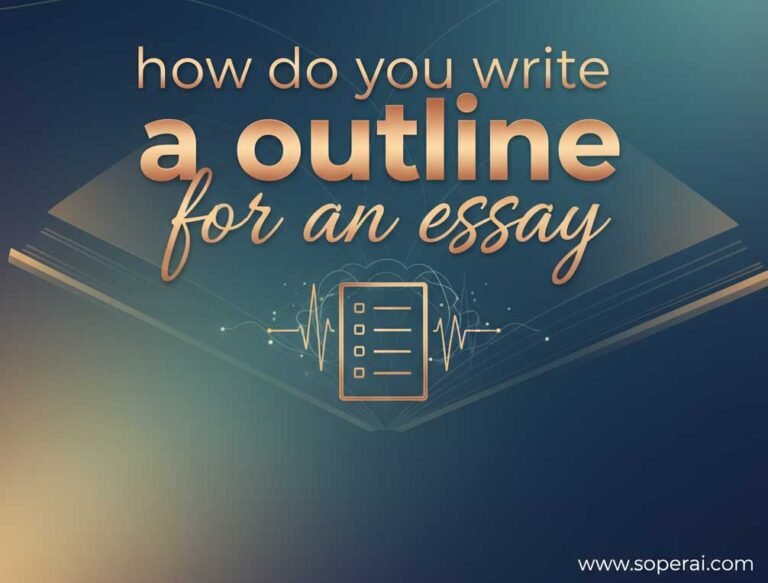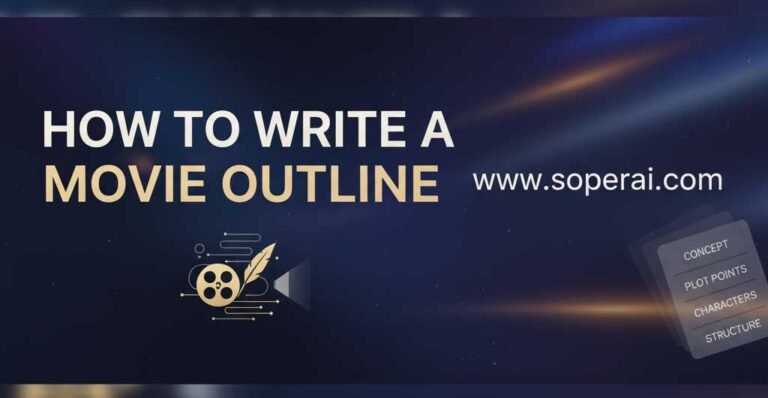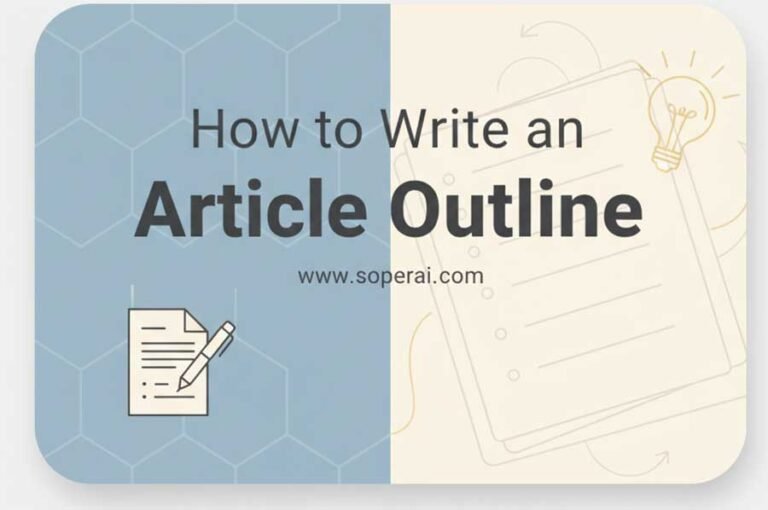Writing a non-fiction book can feel overwhelming, especially when you’re staring at a blank page with countless ideas swirling in your mind. The secret to transforming your expertise into a compelling, well-structured book lies in creating a comprehensive outline. Learning how to write a non-fiction book outline is the foundation that will guide your entire writing journey, prevent writer’s block, and ensure your message resonates with your intended audience.
Unlike fiction, which often relies on creative inspiration and character development, non-fiction writing demands a methodical approach that serves your reader’s learning goals and practical needs. Whether you’re writing a business guide, self-help book, memoir, or educational text, a well-crafted outline becomes your roadmap to success.
Why Your Non-Fiction Book Needs a Strong Outline
The process of outlining non-fiction differs significantly from fiction writing. While fiction authors might discover their story through the writing process, non-fiction authors must have a clear destination in mind before they begin. Your outline serves multiple crucial purposes: it organizes your expertise into digestible chapters, ensures logical flow of information, and helps maintain focus on your core message throughout the writing process.
Fiction Outlining
- Character-driven narratives
- Plot twists and surprises
- Emotional journey focus
- Creative discovery during writing
- Flexible story development
Non-Fiction Outlining
- Reader’s learning journey
- Logical information flow
- Problem-solving focus
- Structured knowledge transfer
- Predetermined outcomes
Many aspiring authors make the mistake of diving into writing without a proper roadmap. This approach often leads to redundant chapters, logical gaps, and books that meander without clear direction. A comprehensive outline prevents these issues by forcing you to think through your entire argument before you write a single chapter.
If you’re also interested in fiction writing, you might want to explore our guide on how to write a book outline for fiction, which covers the unique challenges of plotting fictional narratives.
Key Benefits of a Strong Non-Fiction Outline
- Saves Time: Reduces revision cycles by establishing clear structure upfront
- Prevents Writer’s Block: Provides roadmap when you’re unsure what comes next
- Strengthens Arguments: Ensures logical progression of ideas
- Maintains Focus: Keeps you aligned with your book’s core purpose
- Improves Readability: Creates better flow for your audience
Understanding Your Foundation Before You Outline
Before diving into the actual outlining process, you must establish a solid foundation for your book. This preliminary work will inform every decision you make about structure, content, and presentation. Think of this phase as conducting market research for your ideas.
Defining Your Book’s Core Purpose and Main Argument
Every successful non-fiction book has a clear, compelling thesis or main argument. This isn’t just the topic you’re writing about—it’s the specific angle, solution, or perspective you’re offering. For example, rather than writing generally about “productivity,” you might focus specifically on “how remote workers can maintain productivity without burning out.”
Your core purpose should be expressible in one or two sentences. If you can’t articulate your book’s main point clearly, your readers won’t be able to either. This clarity will guide every chapter and section of your outline.
Identifying Your Target Audience and Their Pain Points
Understanding your audience is crucial for creating an effective outline. Who exactly will benefit from your book? What specific problems do they face? What level of expertise do they already have? These questions will determine everything from your vocabulary choices to the depth of explanation required in each chapter.
Consider creating detailed reader personas. For instance, if you’re writing a marketing book, are you targeting small business owners with no marketing experience, or seasoned marketers looking for advanced strategies? This distinction will dramatically affect your outline structure.
Researching Your Competition and Finding Your Unique Angle
Analyzing existing books in your field serves two purposes: it helps you identify gaps in the market and ensures your approach offers something new. Look at the table of contents of successful books in your genre. What topics do they cover? How do they structure their information? More importantly, what are they missing that you can provide?
Your unique angle might be a fresh perspective, updated information, a different target audience, or a novel approach to solving common problems. This differentiation should be reflected in your outline structure.
Pro Tip: The Competition Analysis Method
Create a spreadsheet listing 10-15 books similar to yours. Note their chapter structures, key topics, and approaches. Look for patterns and gaps. Your outline should address these gaps while building on proven successful structures.
Choosing the Right Non-Fiction Structure for Your Book
Not all non-fiction books should follow the same structure. The framework you choose should align with your content type, audience needs, and the journey you want to take your readers on. Understanding these different approaches is essential when learning how to write a non-fiction book outline that truly serves your content.
Problem-Solution Framework
Best for: Self-help, business, and how-to books
- Identify the problem
- Explore consequences
- Present your solution
- Provide implementation steps
- Address objections
Chronological Structure
Best for: Biographies, historical accounts, process guides
- Linear time progression
- Natural story flow
- Clear beginning-middle-end
- Easy to follow
- Builds understanding progressively
Modular Approach
Best for: Reference books, cookbooks, skill guides
- Stand-alone chapters
- Flexible reading order
- Easy reference
- Topic-based organization
- Allows selective reading
The Problem-Solution Framework
This structure works exceptionally well for business books, self-help guides, and any book that promises to solve a specific problem. You begin by clearly defining the problem your readers face, explore why current solutions fall short, then present your methodology for solving it. Each subsequent chapter builds on your solution, providing deeper implementation details.
Chronological Structures for Historical or Process-Based Content
When your content naturally follows a timeline—whether historical events, personal development stages, or step-by-step processes—chronological structure provides clarity and momentum. This approach works well for memoirs, historical analyses, and books that teach skills requiring sequential learning.
The Modular Approach for Reference and How-To Books
Some books serve readers best when chapters can stand alone. Cookbooks, reference guides, and comprehensive skill manuals often benefit from modular structure. Readers can jump to the information they need without reading everything that came before.
For more specific guidance on different types of outlines, check out our comprehensive guide on how to write a good story outline.
The Pre-Outline Research and Organization Phase
Effective outlining requires thorough preparation. Before you can organize your ideas into a coherent structure, you need to gather, verify, and organize all your source material. This phase often determines the quality and credibility of your final book.
Conducting Thorough Research and Fact-Checking
Even if you’re an expert in your field, additional research strengthens your arguments and ensures accuracy. Look for recent studies, updated statistics, and current examples that support your points. In our rapidly changing world, information becomes outdated quickly, and readers expect current, relevant data.
Create a systematic approach to research. Use reputable sources, document everything properly, and fact-check claims that seem questionable. Remember, your credibility as an author depends on the accuracy of your information.
Creating a Master Document of Sources, Quotes, and Statistics
Organization during the research phase saves countless hours during writing. Create a comprehensive document that catalogs all your sources, memorable quotes, relevant statistics, and supporting evidence. Include full citation information for everything—you’ll thank yourself later when creating your bibliography.
Consider categorizing your research by topic or potential chapter. This organization makes it easier to see which areas need more support and where you have abundance of material.
Identifying Gaps in Your Knowledge
Honest assessment of your knowledge gaps is crucial for creating a comprehensive outline. As you organize your research, you’ll likely discover areas where your information is thin or where counterarguments exist that you haven’t fully addressed.
Make a list of these gaps and prioritize additional research. Sometimes these gaps reveal opportunities to strengthen your book’s unique angle or to address important questions your readers might have.
Common Research Pitfalls to Avoid
- Relying on outdated sources in fast-changing fields
- Cherry-picking data that supports your preconceptions
- Failing to document sources properly during collection
- Ignoring credible counterarguments to your position
- Over-researching as a form of procrastination
Creating Your Chapter Framework
With your research complete and your structure chosen, you’re ready to create the skeleton of your book. The chapter framework is where your outline begins to take concrete shape. This phase requires balancing comprehensive coverage with readable pacing.
Determining the Optimal Number of Chapters
Chapter count varies significantly based on your content and audience. Business books often work well with 8-12 chapters, allowing for detailed exploration without overwhelming readers. Self-help books might need more chapters for step-by-step processes, while academic texts could require extensive subdivision of complex topics.
Consider your readers’ attention spans and consumption patterns. Busy professionals might prefer shorter, focused chapters they can read in one sitting, while academic audiences might expect more comprehensive coverage per chapter.
Writing Compelling Chapter Titles
Chapter titles serve as promises to your readers about what they’ll learn. Effective titles are specific enough to set clear expectations while being engaging enough to maintain interest. Avoid generic titles like “Getting Started” or “Advanced Techniques” in favor of specific, benefit-focused alternatives like “The 5-Minute Morning Routine That Transforms Your Day” or “Advanced Analytics That Drive Real Revenue Growth.”
Your chapter titles should work together to tell the complete story of your book. A reader should be able to understand your book’s flow and coverage just by reading the table of contents.
Establishing Logical Flow and Progression
Each chapter should build on previous ones while standing strong enough to provide value on its own. Consider the knowledge and context readers will have when they reach each chapter. Early chapters should establish foundational concepts that later chapters can reference and build upon.
Test your flow by explaining your chapter sequence to someone unfamiliar with your topic. If they struggle to follow the logic or ask questions about missing steps, your structure may need adjustment.
Chapter Flow Checklist
- Does each chapter have a clear, unique purpose?
- Can readers apply what they learn in each chapter immediately?
- Do chapters build on each other logically?
- Are there obvious gaps in the progression?
- Does each chapter move readers closer to your book’s main goal?
Developing Detailed Chapter Outlines
Once your chapter framework is solid, dive deep into outlining each individual chapter. This detailed work is where your expertise truly shines and where readers will find the most value. Understanding how to write a non-fiction book outline at this level separates amateur efforts from professional publications.
The Anatomy of a Strong Non-Fiction Chapter
Effective non-fiction chapters follow a predictable structure that readers can rely on: a compelling opening that connects to reader needs, clear main points supported by evidence, practical applications or actionable steps, and a conclusion that reinforces key takeaways while transitioning to the next chapter.
Each chapter should feel complete on its own while contributing to your book’s larger argument. Readers should finish each chapter feeling they’ve learned something valuable and applicable to their situation.
Opening Hooks That Connect to Reader Needs
Chapter openings set the tone and engagement level for everything that follows. Start with a story, statistic, or question that immediately demonstrates why the chapter content matters to your readers. Avoid lengthy theoretical introductions in favor of concrete, relatable scenarios that illustrate the chapter’s relevance.
Your opening should create a “curiosity gap”—presenting a problem or question that the chapter will resolve. This technique keeps readers engaged and committed to reading through to the conclusion.
Supporting Your Main Points with Evidence
Non-fiction credibility depends on solid evidence supporting your claims. This includes research studies, expert opinions, case studies, personal experiences, and real-world examples. The key is variety—different types of evidence appeal to different readers and strengthen your arguments from multiple angles.
When incorporating evidence, always explain its relevance clearly. Don’t assume readers will make the connections themselves. Guide them through your reasoning and show how each piece of evidence supports your broader point.
Incorporating Actionable Steps and Practical Applications
Readers of non-fiction books want to apply what they learn. Every chapter should include concrete, actionable steps readers can implement immediately. These might be exercises, checklists, templates, or specific instructions for applying your concepts.
Make these action items as specific as possible. Instead of “improve your communication skills,” provide “three questions to ask in every client meeting to uncover their real concerns.”
Essential Elements to Include in Your Outline
Beyond the main chapters, successful non-fiction books include several supporting elements that enhance reader experience and book credibility. Planning these elements during the outline phase ensures they integrate seamlessly with your main content.
Introduction Strategies That Establish Credibility
Your introduction must accomplish multiple goals: establish your credibility, preview what readers will learn, explain why your approach is unique, and create excitement for the journey ahead. This isn’t just a summary of your book—it’s your opportunity to convince readers they’ve made the right choice in picking up your book.
Consider sharing the story of how you discovered your approach or overcame the challenges your book addresses. Personal connection builds trust and makes your expertise more relatable.
Conclusion Techniques That Inspire Action
Strong conclusions don’t just summarize—they inspire action. Remind readers of the journey they’ve taken, reinforce the key transformations possible through your approach, and provide clear next steps for continued growth. Consider including resources for further learning or ways readers can connect with your ongoing work.
Supporting Materials and Resources
Plan for appendices, resource lists, templates, and other supplementary materials during the outline phase. These additions provide immense value to readers and often become the most-referenced parts of your book. Consider what tools, checklists, or resources would make your content more actionable and valuable.
Essential Supporting Elements to Consider
- Glossary: Define technical terms and jargon
- Resource Lists: Curated tools, books, and websites
- Templates: Ready-to-use forms and frameworks
- Case Studies: Detailed examples of your methods in action
- Exercises: Structured activities for skill development
Testing and Refining Your Outline
Creating your initial outline is just the beginning. The refinement process—testing your structure with others, identifying weaknesses, and making improvements—often determines the difference between a good book and a great one.
Sharing Your Outline with Beta Readers
Beta readers provide invaluable perspective on your outline’s clarity and logic. Choose readers who represent your target audience as well as some who are unfamiliar with your topic. Both perspectives offer important insights.
Ask specific questions: Does the flow make sense? Are there obvious gaps? Which chapters seem most/least valuable? Do the chapter titles clearly communicate what each section covers? This feedback often reveals assumptions you’ve made about reader knowledge or interests.
Target Audience Beta Readers
- Validate relevance and practicality
- Identify missing information
- Confirm appropriate difficulty level
- Test chapter sequence logic
- Provide market perspective
Fresh Perspective Beta Readers
- Spot confusing jargon or assumptions
- Identify unclear explanations
- Question logical leaps
- Highlight engagement issues
- Offer outsider’s viewpoint
Identifying Weak Points and Logical Gaps
Step away from your outline for a few days, then review it with fresh eyes. Look for chapters that seem thin on content, areas where you’ve made logical jumps without adequate explanation, and topics that might overlap or conflict with each other.
Pay particular attention to transitions between chapters. If you can’t clearly explain how one chapter leads to the next, your readers will struggle with the same confusion.
Create a “gap analysis” by reviewing each chapter transition and asking: “What must readers understand to move from Chapter X to Chapter Y?” If there are missing elements, either add them or restructure your sequence.
Ensuring Each Chapter Serves Your Book’s Overall Purpose
Every chapter should advance your book’s main argument or help readers achieve the transformation you’ve promised. If a chapter doesn’t clearly contribute to these goals, it either needs revision or removal, regardless of how interesting the content might be.
This ruthless focus on purpose is what separates focused, impactful books from rambling collections of loosely related ideas.
Chapter Purpose Evaluation Questions
- How does this chapter advance my main argument?
- What specific transformation does this chapter enable?
- Could readers achieve my book’s promise without this chapter?
- Does this chapter introduce concepts needed in later chapters?
- What unique value does this chapter provide?
Tools and Templates for Non-Fiction Outlining
The right tools can significantly improve your outlining efficiency and organization. Different authors prefer different approaches, so experiment with various options to find what works best for your thinking style and workflow.
Digital Tools
- Scrivener: Comprehensive writing suite with research organization
- Notion: Flexible database and note-taking system
- MindMeister: Visual mind mapping for complex topics
- Aeon Timeline: Perfect for chronological structures
Traditional Methods
- Index Cards: Flexible, rearrangeable, tactile
- Whiteboards: Great for visual thinkers
- Paper Systems: Notebooks and printed templates
- Sticky Notes: Color-coded organization
Template Frameworks
- Chapter Summary Template: Consistent structure for each chapter
- Research Organization Sheet: Track sources and evidence
- Timeline Template: For chronological books
- Comparison Matrix: For analytical content
Digital Tools: Scrivener, Notion, and Specialized Software
Digital tools offer powerful organization capabilities, search functionality, and backup security. Scrivener remains the gold standard for book writing, offering research organization, outline structuring, and writing tools in one package. Its corkboard feature allows visual outline manipulation that many authors find invaluable.
Notion provides incredible flexibility for creating custom outline templates, tracking research, and collaborating with others. Its database functionality excels at organizing complex research across multiple topics and sources.
Traditional Methods: Index Cards and Paper Systems
Don’t overlook analog methods. Many successful authors swear by index cards for their flexibility and tactile nature. You can easily rearrange chapters, group related ideas, and see your entire book structure at a glance. The physical manipulation of cards often sparks insights that digital tools miss.
Paper systems work particularly well for visual thinkers who benefit from seeing their outline in large format. Wall-mounted displays let you step back and evaluate your book’s flow from a different perspective.
Version Control and Backup Strategies
Regardless of your chosen tools, implement robust backup and version control systems. Outlines evolve significantly during development, and you may want to return to earlier versions or compare different structural approaches. Cloud storage, regular exports, and dated versions prevent the heartbreak of lost work.
If you’re working on a memoir or autobiography, you might find our specialized guide on how to write an outline for an autobiography particularly helpful.
From Outline to First Draft: Making the Transition
The transition from outline to actual writing often feels daunting, but a well-crafted outline makes this phase significantly more manageable. Your outline becomes your writing roadmap, providing direction when you feel lost and maintaining momentum when motivation wanes. This critical phase is where your planning transforms into tangible progress toward your completed book.
Using Your Outline as a Writing Roadmap Without Being Rigid
Treat your outline as a guide, not a rigid mandate. While it provides structure and direction, remain open to discoveries and improvements that emerge during the writing process. Some of your best insights will come when you’re deep in the flow of explaining complex concepts to your readers.
Think of your outline as a GPS system for your writing journey. Just as GPS recalculates your route when you take a different path, your outline should adapt when you discover better ways to communicate your ideas. The destination remains the same, but the exact route may evolve as you write.
Start each writing session by reviewing the relevant section of your outline, but don’t feel constrained by every bullet point. If inspiration strikes for a powerful example or analogy not in your outline, follow that creative impulse. The outline provides structure, but your expertise and passion provide the life that makes your book compelling.
Rigid Outline Approach
- Follows every outline point exactly
- Resists creative insights during writing
- Treats outline as unchangeable scripture
- Stifles spontaneous improvements
- Results in mechanical, lifeless prose
Flexible Outline Approach
- Uses outline as directional guide
- Welcomes creative discoveries
- Adapts structure when improvements emerge
- Balances planning with spontaneity
- Creates engaging, authentic content
Setting Realistic Writing Goals Based on Your Outline Structure
Your outline provides the framework for creating achievable writing goals. Count your chapters, estimate word counts per section, and work backward from your desired completion date to establish realistic daily and weekly targets.
If you have twelve chapters and want to finish your first draft in six months, you need to complete two chapters per month. Break this down further: if each chapter averages 3,000 words, you need to write 1,500 words per week, or roughly 300 words per weekday. These specific, measurable goals make the massive project of writing a book feel manageable.
Consider the varying complexity of your chapters when setting goals. Some chapters might flow quickly because you’re passionate about the topic, while others might require extensive research or careful explanation of complex concepts. Build buffer time into your schedule for these challenging sections.
Track your progress visually using charts, spreadsheets, or apps. Seeing your word count grow and chapters completed provides powerful motivation during difficult writing days. Many authors find that visual progress tracking helps maintain momentum even when enthusiasm wanes.
Goal-Setting Formula for Outline-Based Writing
- Total Target Words ÷ Writing Days Available = Daily Word Goal
- Chapters ÷ Months Available = Monthly Chapter Goal
- Build in 20% buffer time for revisions and unexpected challenges
- Set weekly milestones to maintain accountability
- Adjust goals based on actual writing speed after first few chapters
When and How to Deviate from Your Original Outline
Deviating from your outline isn’t failure—it’s evolution. As you write, you’ll discover better ways to explain concepts, realize certain sections need more depth, or find that some planned content isn’t as valuable as you initially thought. The key is making conscious, strategic decisions about changes rather than wandering aimlessly.
Consider deviating when you discover:
- Better Examples: A more compelling case study or story emerges that illustrates your point more powerfully
- Logical Improvements: You realize a different sequence would help readers understand concepts more clearly
- Missing Elements: Critical information that wasn’t in your original outline but is necessary for reader success
- Redundant Content: Sections that overlap significantly with other parts of your book
- Outdated Information: Research or examples that are no longer current or relevant
When you feel the urge to deviate significantly, pause and ask: “Does this change serve my readers better? Does it strengthen my overall argument? How does this affect the rest of my book structure?” If the answers support the change, make it confidently. If not, stay with your original plan.
Document significant deviations so you can update your outline accordingly. This practice prevents confusion later and helps you maintain overall book coherence even as individual sections evolve.
Maintaining Momentum While Staying True to Your Core Message
Writing momentum depends on confidence in your direction. When you trust your outline, you can write with certainty and focus. If you find yourself constantly second-guessing your structure, return to the outline refinement process rather than pushing forward with doubt.
Your core message—the central thesis or transformation promise of your book—should remain constant even as specific content evolves. Before making any significant changes, ask: “Does this support or distract from my core message?” This litmus test helps you distinguish between helpful improvements and potentially harmful tangents.
Create accountability systems to maintain momentum. Share your progress with writing partners, join author groups, or hire a coach who can provide external motivation and perspective. Sometimes the simple act of reporting progress to others provides the push needed to continue during challenging periods.
Celebrate small wins regularly. Completing each chapter, reaching word count milestones, or finishing particularly challenging sections deserves recognition. These celebrations fuel motivation for the work ahead and help you appreciate the progress you’re making toward your larger goal.
Momentum Maintenance Strategies
- Daily Writing Ritual: Establish consistent time and place for writing
- Progress Tracking: Visual charts showing completed sections and word counts
- Accountability Partners: Regular check-ins with other writers or mentors
- Milestone Rewards: Meaningful celebrations for completed chapters or phases
- Obstacle Planning: Predetermined strategies for overcoming common challenges
Tracking Progress and Celebrating Milestones
Effective progress tracking goes beyond simple word counts. Track multiple metrics that reflect different aspects of your writing success: chapters completed, research milestones reached, feedback received, and problems solved. This comprehensive tracking provides a fuller picture of your progress and multiple reasons to feel accomplished.
Create meaningful milestone celebrations that reinforce your commitment to the project. These might include sharing progress with supporters, treating yourself to something special, or taking breaks to recharge your creative energy. The key is making these celebrations meaningful enough to provide genuine motivation while not derailing your writing momentum.
Regular progress review sessions help you stay aligned with your goals and make necessary adjustments to your timeline or approach. Weekly reviews allow you to catch problems early and make small corrections rather than major overhauls later.
Transition Success Strategies
- Start each writing session by reviewing the relevant outline section
- Set specific, achievable daily writing goals
- Track progress visually to maintain motivation
- Schedule regular outline review and revision sessions
- Celebrate milestone achievements to maintain momentum
Transition Success Strategies
- Start each writing session by reviewing the relevant outline section
- Set specific, achievable daily writing goals
- Track progress visually to maintain motivation
- Schedule regular outline review and revision sessions
- Celebrate milestone achievements to maintain momentum
Common Pitfalls and How to Avoid Them
Even experienced authors can fall into predictable traps when creating non-fiction outlines. Understanding these common pitfalls helps you navigate the outlining process more effectively and avoid time-consuming mistakes that can derail your writing project.
Over-Outlining That Stifles Creativity and Spontaneity
The most detailed outline in the world becomes counterproductive if it eliminates room for creative discovery during the writing process. Some authors create outlines so comprehensive that they’ve essentially written their book in bullet points, leaving no room for the natural flow and inspiration that makes writing engaging for both author and reader.
Over-outlining often stems from anxiety about the writing process or perfectionist tendencies that mistake extensive planning for actual progress. While thorough preparation is valuable, remember that your outline should provide structure, not script every sentence. Leave space for examples, stories, and insights to emerge naturally during writing.
Signs you may be over-outlining include spending more time refining your outline than writing, creating sub-sub-sub-points for every conceivable detail, or feeling like you have nothing left to discover when you sit down to write. Your outline should excite you about the writing ahead, not make it feel like mechanical transcription.
Over-Outlining Warning Signs
- Spending weeks perfecting outline details without writing
- Creating bullet points for every example and story
- Feeling like you’ve already “written” your book in the outline
- Avoiding the actual writing because the outline feels complete
- Losing excitement about your topic due to excessive pre-planning
Under-Outlining That Leads to Meandering and Weak Structure
On the opposite extreme, insufficient outlining creates its own set of problems. Authors who begin writing with only vague ideas about structure often produce manuscripts that meander, repeat themselves, or fail to build compelling arguments. Under-outlined books typically require extensive revision to achieve coherent flow and logical progression.
Under-outlining frequently occurs when authors confuse inspiration with preparation. While passion for your topic is essential, it cannot substitute for thoughtful structural planning. Readers need clear pathways through your expertise, and that requires intentional organization.
The consequences of under-outlining become apparent during the writing process: frequent writer’s block as you’re unsure what comes next, chapters that don’t connect logically, redundant content across different sections, and arguments that lack compelling progression. These problems are much easier to prevent through proper outlining than to fix through revision.
Under-Outlined Book Problems
- Circular arguments and repetitive content
- Chapters that don’t build on each other
- Missing logical connections
- Inconsistent depth across topics
- Weak conclusions that don’t tie themes together
Well-Outlined Book Benefits
- Clear progression of ideas
- Logical flow between chapters
- Consistent treatment of topics
- Strong argument development
- Satisfying conclusions that integrate themes
Failing to Consider Your Reader’s Learning Curve and Prior Knowledge
One of the most common outlining mistakes is organizing content based on your own expertise rather than your reader’s learning journey. Authors often structure information in the order they learned it or in ways that make sense to someone who already understands the topic deeply. This approach creates outlines that confuse rather than educate readers.
Effective outlines anticipate what readers need to know at each stage and provide that information in digestible sequences. This requires stepping outside your expert perspective and imagining the mindset of someone encountering your ideas for the first time. What foundational concepts must they understand before tackling advanced topics? What assumptions are you making about their prior knowledge?
To avoid this pitfall, regularly test your outline sequence with people who represent your target audience. Ask them to identify points where they feel lost or confused. Their feedback often reveals gaps in your logical progression that expertise blindness prevented you from seeing.
Neglecting to Update Your Outline as Your Understanding Evolves
Your initial outline represents your best understanding at the beginning of your writing journey, but that understanding will inevitably deepen and evolve as you research and write. Rigid adherence to your original outline can prevent you from incorporating important insights and improvements that emerge during the writing process.
Treating your outline as a living document rather than a fixed blueprint allows you to benefit from the discoveries that happen during writing. Schedule regular outline review sessions where you consider what you’ve learned and how that might improve your book’s structure or content. These reviews help ensure your final book reflects your best thinking rather than your initial assumptions.
Keep track of significant outline changes and their reasoning. This documentation helps you maintain coherence across your book and provides valuable insights for future writing projects. Understanding why certain structural decisions worked or didn’t work improves your outlining skills for subsequent books.
Getting Stuck in Outline Perfectionism Instead of Moving to Writing
Perfectionist tendencies can trap authors in endless outline refinement cycles that delay actual writing indefinitely. While thorough planning is valuable, at some point you must trust your preparation and begin the writing process. Perfect outlines don’t exist, and waiting for perfection guarantees you’ll never finish your book.
Set clear criteria for when your outline is “good enough” to begin writing. These might include having clear chapter purposes, logical flow between sections, and adequate research support for your main points. Once you meet these criteria, begin writing even if you can imagine further improvements to your outline.
Remember that writing itself generates insights that can improve your outline. Sometimes the best way to solve structural problems is to begin writing and see how your ideas develop on the page. Trust the iterative process of writing and revision rather than demanding perfection before you begin.
Outline Completion Criteria
- Clear Purpose: Each chapter has a specific, defined goal
- Logical Flow: Chapters build on each other coherently
- Adequate Research: Main points have supporting evidence
- Reader Focus: Structure serves reader needs, not author convenience
- Actionable Content: Each section provides practical value
Your Roadmap to Non-Fiction Success
Mastering the art of non-fiction outlining transforms the daunting task of writing a book into a manageable, systematic process. The principles and techniques covered in this guide provide the foundation for creating books that serve your readers effectively while establishing you as a credible authority in your field.
Recap of Key Principles for Effective Non-Fiction Outlining
The most successful non-fiction outlines share several fundamental characteristics. They begin with a clear understanding of the reader’s needs and learning objectives, organize information in logical sequences that build understanding progressively, and balance comprehensive coverage with practical applicability.
Remember that your outline serves multiple masters: it must satisfy your creative vision while serving your reader’s practical needs, provide structure without stifling spontaneity, and offer comprehensive coverage without overwhelming complexity. This balance distinguishes professional-quality outlines from amateur attempts.
The structural frameworks we’ve explored—problem-solution, chronological, and modular approaches—provide tested templates for organizing different types of content. Choose the framework that best serves your content and audience, but don’t hesitate to adapt or combine approaches when your material demands innovation.
Most importantly, view your outline as a dynamic tool that evolves with your understanding. The best outlines improve throughout the writing process, incorporating new insights and responding to feedback while maintaining focus on your core message and reader benefits.
Essential Outline Success Principles
- Reader-Centered: Structure serves reader learning, not author convenience
- Purpose-Driven: Every chapter advances your book’s main objective
- Evidence-Based: Claims supported by credible research and examples
- Action-Oriented: Provides practical, implementable guidance
- Iterative: Improves through testing, feedback, and revision
Encouragement for the Writing Journey Ahead
Writing a non-fiction book is one of the most rewarding intellectual challenges you can undertake. Your expertise, perspective, and insights have the power to transform lives, advance understanding, and contribute meaningfully to important conversations in your field. The world needs the knowledge you possess, but only if you have the courage and persistence to share it effectively.
The outlining process you’ve just learned provides a proven path from idea to published book. Thousands of successful authors have followed similar processes, transforming their expertise into books that continue impacting readers long after publication. Your book can join this legacy of knowledge sharing and positive influence.
Expect challenges along the way. Writer’s block, self-doubt, and structural problems are normal parts of the process, not signs of failure. Your outline provides a compass during these difficult moments, helping you maintain direction when motivation wavers or obstacles appear insurmountable.
Trust the process you’ve learned, but remain flexible enough to adapt when circumstances demand change. The combination of solid preparation and responsive adaptability characterizes successful authors across all genres and topics.
Resources for Continued Learning and Improvement
Your education in non-fiction writing shouldn’t end with outline completion. The publishing landscape evolves constantly, new research methodologies emerge, and reader expectations continue to develop. Staying current with best practices ensures your books remain relevant and competitive.
Consider joining professional organizations for non-fiction authors in your field. These communities provide ongoing education, networking opportunities, and support from fellow authors facing similar challenges. The relationships you build can provide accountability, feedback, and encouragement throughout your writing career.
Invest in your craft through workshops, courses, and reading programs focused on non-fiction writing excellence. Study books in your genre not just for content but for structural techniques and reader engagement strategies. Understanding why certain books succeed helps you apply similar principles to your own work.
Build relationships with editors, beta readers, and writing coaches who can provide objective feedback on your work. Outside perspectives often identify strengths and weaknesses that author proximity makes invisible. These relationships become increasingly valuable as your writing career develops.
Continued Learning Resources
- Professional Associations: Genre-specific author organizations
- Writing Conferences: Annual events for skill development and networking
- Online Communities: Forums and social media groups for ongoing support
- Craft Books: Specialized texts on non-fiction writing techniques
- Mentorship Programs: Learning from established authors in your field
Final Thoughts on Balancing Structure with Authentic Voice
The ultimate goal of effective outlining is not rigid adherence to predetermined structures, but rather the creation of frameworks that allow your authentic voice and genuine expertise to shine through clearly. Your outline should feel like a comfortable stage that showcases your unique perspective, not a constraining script that diminishes your natural communication style.
The best non-fiction books combine solid structural foundation with authentic personal voice. Readers connect with authors who demonstrate both competence and humanity, who can organize complex information while maintaining conversational accessibility. Your outline should support both these dimensions of effective non-fiction writing.
Remember that your voice develops through practice, not perfection. Each book you write, each outline you create, and each reader interaction you experience contributes to your evolution as an author. Embrace this developmental process rather than demanding immediate mastery.
As you move forward with your non-fiction writing projects, carry the confidence that comes from thorough preparation combined with the flexibility that enables creative response to unexpected opportunities. Your expertise matters, your perspective adds value, and your commitment to serving readers through well-structured content positions you for meaningful success as a non-fiction author.
The journey from outline to published book requires dedication, but it’s a journey that countless authors have completed successfully using the principles and techniques you’ve just learned. Your book—with its unique insights, carefully crafted structure, and authentic voice—awaits your commitment to the writing process. Begin today, trust your preparation, and remember that every successful book started with an author who decided to transform their expertise into a structured gift for readers who need exactly what you have to offer.
Your Next Steps
- Define your book’s core purpose and target audience
- Choose the structural framework that best serves your content
- Create your chapter framework with compelling, specific titles
- Develop detailed chapter outlines with supporting evidence
- Test your outline with beta readers and refine based on feedback
- Set realistic writing goals and begin your first draft
- Stay connected with the writing community for ongoing support
FAQS
1. What are the essential components of a non-fiction book outline?
A strong non-fiction book outline includes your book’s central thesis or main argument, chapter titles with brief descriptions, key points or subtopics for each chapter, supporting evidence or research notes, and a logical flow that builds toward your conclusion. Most successful outlines also incorporate an introduction that hooks readers and a conclusion that reinforces your message. Consider including placeholder sections for case studies, expert interviews, or practical exercises that will engage your audience throughout the manuscript.
2. Should I outline my entire non-fiction book before I start writing?
Creating a complete outline before writing offers significant advantages for non-fiction authors. A detailed outline helps you identify gaps in your research early, maintains consistent argumentation throughout your book, and prevents writer’s block by providing a clear roadmap. However, your outline should remain flexible—many authors refine their structure as they write and discover new insights. Starting with at least a chapter-level outline ensures your book has coherent direction while leaving room for organic development during the writing process.
3. How detailed should each chapter be in my non-fiction book outline?
The ideal level of detail varies by author preference and book complexity, but aim for a balance that provides direction without feeling restrictive. Each chapter section should include the main concept, 3-5 key supporting points, relevant examples or data you plan to reference, and how it connects to your overall thesis. For complex topics, you might expand to paragraph-level summaries. Simpler concepts may only need bullet points. The outline should be detailed enough that someone else could understand your book’s flow and argument.
4. What’s the difference between a working outline and a structural outline for non-fiction?
A structural outline focuses on the architecture of your book—the sequence of chapters, major sections, and how ideas build upon each other. It’s typically what you’d submit to a publisher in a book proposal. A working outline is more detailed and evolves as you write, including specific examples, quotes, research citations, and granular subtopics. Many non-fiction authors start with a structural outline for planning and pitching, then develop a working outline as their research deepens and writing progresses.
5. How do I organize chapters in my non-fiction book outline logically?
Effective chapter organization depends on your book’s purpose and subject matter. Common structures include chronological order for historical or biographical works, problem-to-solution sequences for self-help or business books, simple-to-complex progressions for educational content, and thematic groupings for essay collections. Ensure each chapter builds on previous content and creates momentum toward your conclusion. Test your sequence by writing one-sentence summaries of each chapter—they should read like a coherent story or argument when placed together.
6. Can I use a fiction outlining method for my non-fiction book?
While fiction and non-fiction have different goals, some fiction outlining techniques translate effectively to non-fiction writing. The three-act structure can work for narrative non-fiction or memoirs, where you establish a situation, develop tension or complications, and reach resolution. Story-boarding helps visualize your book’s flow, and character development techniques apply when writing biography or incorporating personal narratives. However, non-fiction requires stronger emphasis on evidence, logical argumentation, and practical takeaways rather than plot-driven suspense.
7. How do I outline a non-fiction book when I’m still conducting research?
Start with a preliminary outline based on your existing knowledge and research questions, organizing what you already know and identifying knowledge gaps. As you research, continuously update your outline with new findings, refine your thesis as evidence emerges, and reorganize chapters when you discover better logical connections. Use your outline as a research tool by noting questions that need answers within relevant sections. This iterative approach ensures your research directly supports your book’s structure rather than creating overwhelming amounts of unused material.
8. What outlining software or tools work best for non-fiction authors?
Popular outlining tools for non-fiction include Scrivener, which offers robust organizational features and research integration; Notion or OneNote for flexible, database-style outlines; mind-mapping software like MindMeister for visual thinkers; and simple tools like Google Docs with heading styles for collaborative outlining. Many authors successfully use basic word processors with numbered lists or even pen and paper. Choose tools that match your workflow—the best outlining system is one you’ll actually use consistently throughout your writing process.
9. How long should my non-fiction book outline be?
A typical non-fiction book outline ranges from 3-10 pages for a basic structural outline suitable for book proposals, to 15-30 pages for a comprehensive working outline with detailed chapter breakdowns. The length depends on your book’s complexity and your writing style—some authors prefer sparse outlines while others need extensive detail. For traditional publishing proposals, agents and editors typically expect a 1-2 page overview plus 1-2 paragraphs per chapter. Focus on creating an outline that’s substantial enough to guide your writing without becoming a writing project itself.
10. Should I include my research sources directly in my non-fiction book outline?
Integrating research sources into your outline saves significant time during the writing phase and strengthens your manuscript’s credibility. Include citation information, key quotes, page numbers, and brief summaries of relevant studies or expert opinions within the appropriate outline sections. This practice helps you identify where evidence is strong or lacking, prevents plagiarism by maintaining clear attribution from the start, and allows you to spot conflicting sources early. Consider using footnotes, brackets, or different colors to distinguish source material from your original ideas within the outline.

